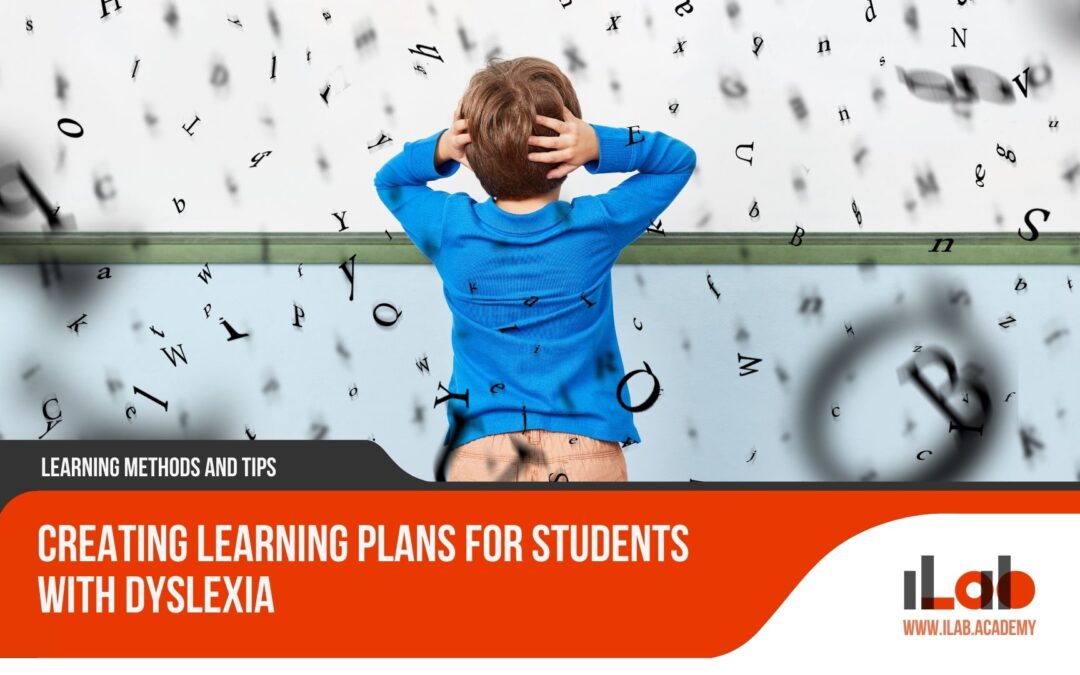Table of contents
In the intricate tapestry of human interaction, receptive language serves as the silent weaver, threading understanding through the warp and weft of communication. It is the silent partner to expressive language, often overshadowed yet equally critical in the dance of dialogue. As we unpick the nuances of receptive language, we begin to appreciate its pervasive influence on all facets of language acquisition and interpersonal relations. With the increasing recognition of its significance, professionals across various disciplines are calling for a deeper exploration into the mechanisms that underpin this fundamental cognitive skill. As we embark on this exploration, we must ask ourselves: What are the implications of receptive language on an individual’s ability to navigate and interpret the complex world around them? And how might deficits in this area shape the landscape of learning and social interaction? The answers to these questions hold profound implications for educational strategies, therapeutic interventions, and the broader understanding of human cognition.
Key Takeaways
- Receptive language refers to the ability to understand and process spoken or written language, and it plays a foundational role in effective communication and language development.
- The development of receptive language skills in early childhood is important for a child’s cognitive and social growth, and there are typical milestones that can be used to track this development.
- Receptive language and expressive language are two distinct abilities that contribute to a person’s linguistic competence, with receptive language focusing on comprehension and expressive language focusing on production.
- Receptive language disorders can have significant effects on learning and communication, so it is important to be aware of the signs and seek appropriate support systems.
Receptive Language Defined
Receptive language is the cognitive ability that allows individuals to comprehend and interpret both verbal and written communication, forming the bedrock of successful interaction and learning. It involves a complex set of skills that enable a person to understand words, sentences, and the meaning of what is being communicated by others. This foundational aspect of language is critical, as it directly affects how we process and make sense of the world around us.
Understanding receptive language requires an appreciation for the intricacies of human communication. It goes beyond merely hearing words or seeing text; it encompasses the ability to integrate auditory and visual information, recognize patterns, and infer meaning from context. For instance, when someone speaks, an individual with well-developed receptive language skills can grasp not only the explicit content but also the subtleties conveyed through tone, emphasis, and body language.
Moreover, receptive language is a precursor to effective expressive language, which is the ability to convey thoughts and feelings through speech or writing. Before one can respond appropriately in a conversation or articulate ideas, it is necessary to fully understand what others are saying. Hence, receptive language acts as a scaffold for language development, supporting and enhancing communicative competence.
In essence, receptive language is the silent partner in every exchange, a cognitive function so integral to human interaction that its absence or impairment can significantly disrupt the natural flow of dialogue and learning. As such, a clear understanding of receptive language and its role in our lives is vital for fostering effective communication and nurturing educational growth.
The Development of Receptive Language in Early Childhood
Charting the progression of a child’s understanding of language, experts have identified key milestones that signal the growth of receptive language skills during early childhood. In the initial months of life, infants show early signs of receptive language by reacting to the tone and rhythm of speech. By six months, they begin to recognize their own names and other common words. As they approach their first birthday, children typically understand simple instructions and are able to identify objects when named.
Between ages one and two, toddlers make significant strides, discerning a vast array of words and phrases. They follow more complex directives and begin to grasp the nuances of questions versus statements. Crucially, this period sees the emergence of joint attention, where a child and caregiver focus on the same object or activity, fostering deeper language comprehension.
By the age of three, most children comprehend not only the names of objects but also their functions. They understand basic concepts like size and quantity and can follow multi-step instructions. This ability to process and act upon language cues is vital for cognitive and social development, paving the way for successful interaction and learning.
These milestones, while typical, are not fixed. Each child’s receptive language develops at a unique pace, influenced by a combination of genetic, environmental, and interactive factors. However, consistent exposure to language through reading, conversation, and play is universally acknowledged as beneficial. It is important for parents and caregivers to be attuned to these developmental milestones to support a child’s linguistic journey and to identify any potential delays that may require professional intervention.
Receptive vs. Expressive Language: Understanding the Difference
While both receptive and expressive language skills are integral to communication, they play fundamentally different roles in how we interpret and convey information. Receptive language refers to the ability to understand and process language that we hear or read. It is the skill of comprehension, allowing individuals to make sense of words, sentences, and the overall meaning of what is being communicated to them. This comprehension is essential for following instructions, participating in conversations, and absorbing information.
On the other hand, expressive language is the ability to convey thoughts, feelings, and information to others. It encompasses the production of language, including the selection of appropriate words, the formation of coherent sentences, and the use of language to express complex ideas. This aspect of language enables individuals to articulate their needs, share their experiences, and interact socially with others.
The interplay between receptive and expressive language is a dynamic process. Effective communication relies on a person’s capability to understand the message received (receptive language) and to respond appropriately (expressive language). While these skills often develop in tandem, it is not uncommon for individuals to exhibit a disparity between the two. For instance, a child may understand language (receptive) far better than he or she can speak or write it (expressive), or vice versa.
Understanding the distinction between receptive and expressive language is crucial, as it can influence the approach taken when addressing communication needs. Recognizing the unique challenges associated with each can lead to more targeted interventions and support, ensuring that both aspects of language development are nurtured effectively.
Recognizing Receptive Language Disorders
Understanding the signs and implications of receptive language disorders is essential for early intervention and providing effective support to those affected. Receptive language disorders can significantly impact a person’s ability to comprehend and process language, leading to difficulties in learning, social interaction, and overall communication.
A receptive language disorder is not always easy to identify, especially in young children who are still developing their language skills. However, there are key indicators that can signal a problem. These include:
- Difficulty Following Instructions: Individuals, particularly children, may struggle to understand and follow verbal directions, even simple ones.
- Problems with Understanding Questions: They often find it challenging to comprehend questions and may provide irrelevant answers.
- Limited Vocabulary Understanding: There is a noticeable lag in the comprehension of new words compared to peers, resulting in a limited vocabulary.
These signs can vary in severity and may be accompanied by other language or developmental issues. It is crucial for caregivers, educators, and health professionals to be aware of these indicators as early diagnosis and intervention can lead to more effective outcomes.
Receptive language disorders can arise from a variety of causes including developmental delays, neurological conditions, or hearing impairments. Regardless of the cause, early assessment by a speech-language pathologist is critical. These professionals can provide a comprehensive evaluation and tailor intervention strategies to support language development.
Timely support and intervention can help individuals with receptive language disorders to improve their language comprehension skills, which is fundamental for their success in academic, social, and later vocational settings. By recognizing and addressing these disorders early, we can give those affected the best possible chance to overcome their communication challenges and thrive.
Strategies for Enhancing Receptive Language Skills
Developing robust receptive language skills in children is crucial, and there are several effective strategies that parents, caregivers, and educators can employ to facilitate this important aspect of language acquisition. These strategies are designed to enrich the child’s linguistic environment and enhance their ability to understand and process language.
One effective approach is to engage in frequent, meaningful conversations with the child. This includes asking open-ended questions that encourage the child to think and respond, thus stimulating comprehension and cognitive engagement. Actively listening to the child’s responses and expanding on their statements also reinforces their ability to process and understand language.
Reading aloud to children is another powerful tool for developing receptive language. It exposes them to a broader vocabulary and a variety of sentence structures, which can improve their understanding of language. It’s beneficial to discuss the story, ask predictive questions, and talk about the characters and events to deepen their comprehension.
Incorporating play-based learning can further strengthen receptive language skills. During play, children can be prompted to follow directions, understand requests, and respond to questions, all within a fun and low-pressure environment. This helps them practice language comprehension in a context that is engaging and meaningful to them.
Visual aids, such as pictures and gestures, can also support understanding, particularly for complex instructions or new vocabulary. By pairing language with visual context, children can better grasp the meaning of words and phrases.
The Role of Receptive Language in Learning and Literacy
How does receptive language lay the groundwork for academic achievement and the development of literacy skills in educational settings? Receptive language is the bedrock upon which students construct their learning experiences. It allows them to comprehend instructions, grasp the meaning of words and sentences, and follow narratives and arguments. Without a solid foundation in receptive language, children may struggle to make sense of the curriculum, impeding their ability to read, write, and engage with content across all academic disciplines.
The impact of receptive language on learning and literacy is multifaceted:
- Understanding Instructions: Pupils with strong receptive language skills can follow complex instructions, contributing to successful task completion and classroom management. This is essential across all subjects and becomes increasingly important as students progress through their education and are expected to work more independently.
- Vocabulary Growth: A robust receptive vocabulary is critical for reading comprehension. Students who understand a wide range of words are better equipped to make sense of texts, which in turn fosters their ability to decode unfamiliar words and comprehend complex literary and informational texts.
- Language Processing: Effective receptive language skills underpin the ability to process and synthesize information. This is crucial not only for literacy but also for problem-solving, critical thinking, and the capacity to learn from oral presentations and discussions.
Technology and Tools for Supporting Receptive Language
While receptive language serves as a cornerstone for learning and literacy, technological advancements offer innovative ways to support and enhance these essential skills. Today’s digital landscape provides a plethora of tools and applications that cater to the diverse needs of individuals looking to improve their receptive language capabilities. These technologies are particularly beneficial for those with receptive language disorders, offering customized and engaging methods to practice language comprehension.
For instance, speech recognition software can be used to convert spoken words into text, allowing users to both see and hear language, which can reinforce understanding. Additionally, language learning apps often come with interactive exercises that focus on listening comprehension, providing immediate feedback to users.
Here is a concise overview of some available technologies and tools:
| Technology/Tool | Purpose |
|---|---|
| Language Learning Apps | Interactive exercises for listening comprehension |
| Audiobooks and Podcasts | Exposure to a wide range of vocabulary and sentence structures |
| Speech-to-Text Software | Visual reinforcement of spoken language |
| Educational Games | Engaging practice of language through gamification |
These tools not only facilitate the development of receptive language but also make learning accessible and entertaining. It is crucial for users to select the right tools that align with their learning style and goals, and for educators and caregivers to integrate these technologies effectively into learning plans. With consistent use, technology can be a powerful ally in mastering the nuances of receptive language and overcoming the challenges associated with its disorders.
Seeking Help: When to Consult a Professional
Recognizing the signs that indicate a potential receptive language disorder is crucial for timely intervention and support from language specialists. When typical language development appears disrupted or delayed, it may be necessary to consult a professional. Here are three clear indicators that it could be time to seek help:
- Persistent Difficulties in Understanding: If a child or adult consistently demonstrates challenges in following instructions, answering questions, or seems to misunderstand verbal information, this could suggest a receptive language issue.
- Social Interaction Struggles: Trouble engaging in social settings, such as appearing unresponsive to others or not participating in age-appropriate conversations, may be a sign of receptive language deficits.
- Educational or Behavioral Concerns: When there are noticeable problems in school or work, such as learning difficulties or behavioral changes related to communication frustrations, professional assessment may be warranted.
Recognizing these signs is the first step toward addressing a receptive language disorder. It’s important to understand that seeking help is a proactive measure that can lead to significant improvements in communication and overall quality of life. Speech-language pathologists (SLPs) are the primary professionals equipped to evaluate and treat receptive language disorders. They can provide a comprehensive assessment to determine the extent of the disorder and create a tailored intervention plan.
Early intervention is key. The sooner an individual receives support, the more effective the language development strategies can be. Therefore, if you or someone you know is exhibiting any of these signs, reaching out to a language specialist can be an essential step in fostering better communication skills.
Frequently Asked Questions
How Does Receptive Language Ability Vary Across Different Languages and Cultures?
Receptive language ability can differ across languages and cultures due to varying linguistic structures and sociocultural norms. These differences can affect how individuals interpret and understand spoken or written communication. For instance, idiomatic expressions or cultural references may not translate directly, requiring a deeper cultural knowledge for accurate comprehension. Additionally, the complexity of a language’s grammar and syntax can impact the ease of acquiring receptive skills.
Can Adults Who Have Not Had Receptive Language Issues Develop Them Later in Life, and What Might Cause This?
Yes, adults can develop receptive language issues later in life due to various causes, such as stroke, traumatic brain injury, or progressive neurological conditions like dementia. These issues can significantly impact daily communication and quality of life, necessitating interventions from speech-language pathologists or other healthcare professionals to manage and improve the affected individual’s language comprehension abilities. Early detection and tailored therapy are crucial in addressing these challenges.
In What Ways Do Bilingualism or Multilingualism Affect the Development and Functioning of Receptive Language Skills?
Bilingualism and multilingualism can influence receptive language skills by potentially enhancing cognitive flexibility and attention to linguistic detail. Proficiency in multiple languages often requires differentiated comprehension abilities to navigate varying grammatical structures and vocabularies. However, it may also introduce complexities in language processing, which can be challenging for some individuals. The key impacts are an enriched linguistic experience and, occasionally, an increased demand on language acquisition processes.
How Can Receptive Language Disorders Influence Social Interactions and Relationships Outside of Educational Settings?
Receptive language disorders can significantly impact social interactions and relationships beyond educational spheres. Individuals with such disorders may struggle to comprehend verbal cues, leading to miscommunications and difficulties in forming connections. This can result in social isolation and emotional challenges, underscoring the importance of early intervention and support to enhance understanding and interpersonal skills in various social contexts.
Are There Specific Brain Exercises or Non-Linguistic Therapies That Can Indirectly Enhance Receptive Language Abilities?
Yes, certain brain exercises and non-linguistic therapies can indirectly improve receptive language abilities. Activities that strengthen auditory processing, memory, and attention can bolster the cognitive skills underpinning language comprehension. For instance, music therapy and listening training programs may enhance auditory discrimination, while puzzles and memory games could reinforce working memory and attention—all critical for processing and understanding language. Consulting with a speech-language pathologist can help tailor an effective regimen.
Conclusion
In summary, receptive language plays a pivotal role in communication and cognitive development, forming the bedrock of language acquisition and literacy. Understanding its distinction from expressive language enables better identification of disorders and enhances intervention strategies. Efforts to bolster receptive language capabilities are critical for educational success. Technological advancements offer innovative support, while professional guidance is crucial for addressing concerns. Early recognition and intervention remain imperative for optimizing developmental trajectories in receptive language proficiency.














